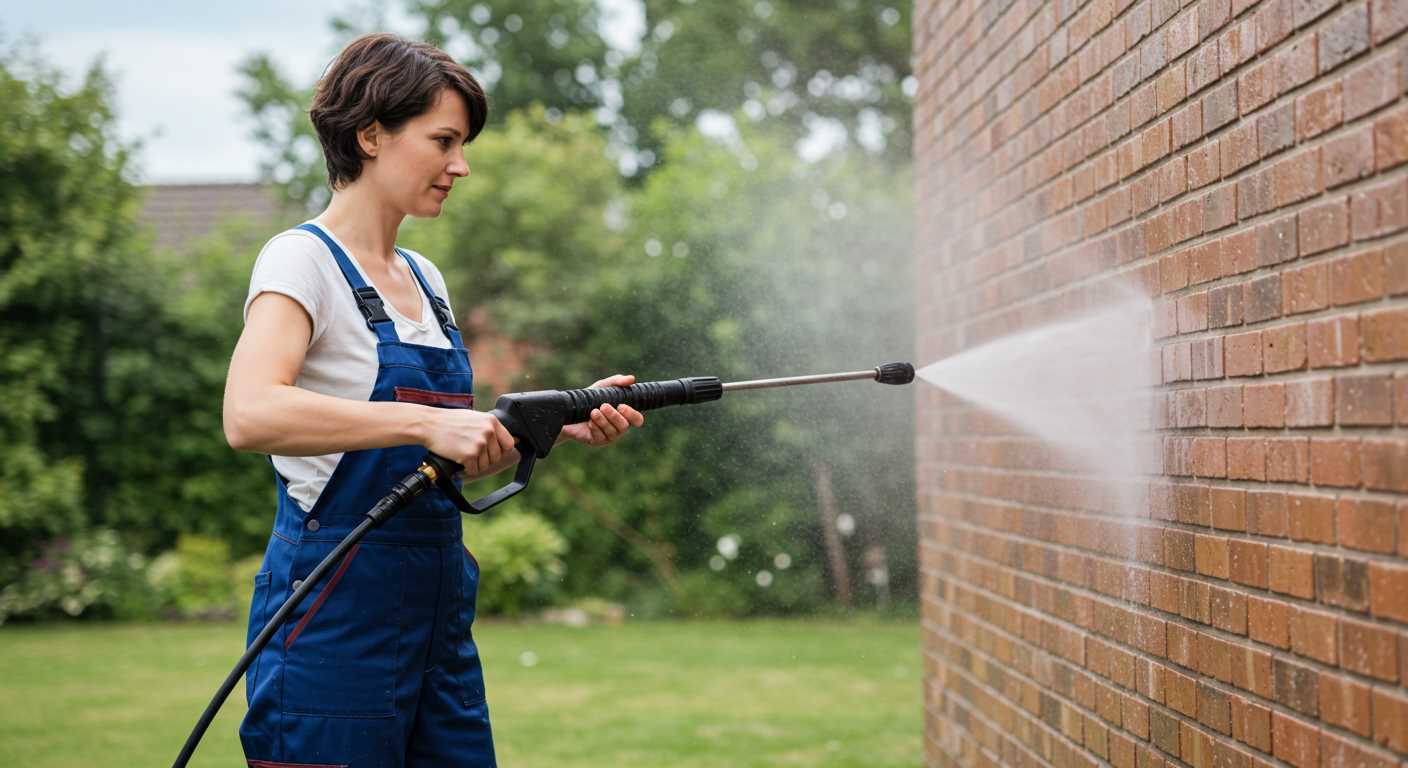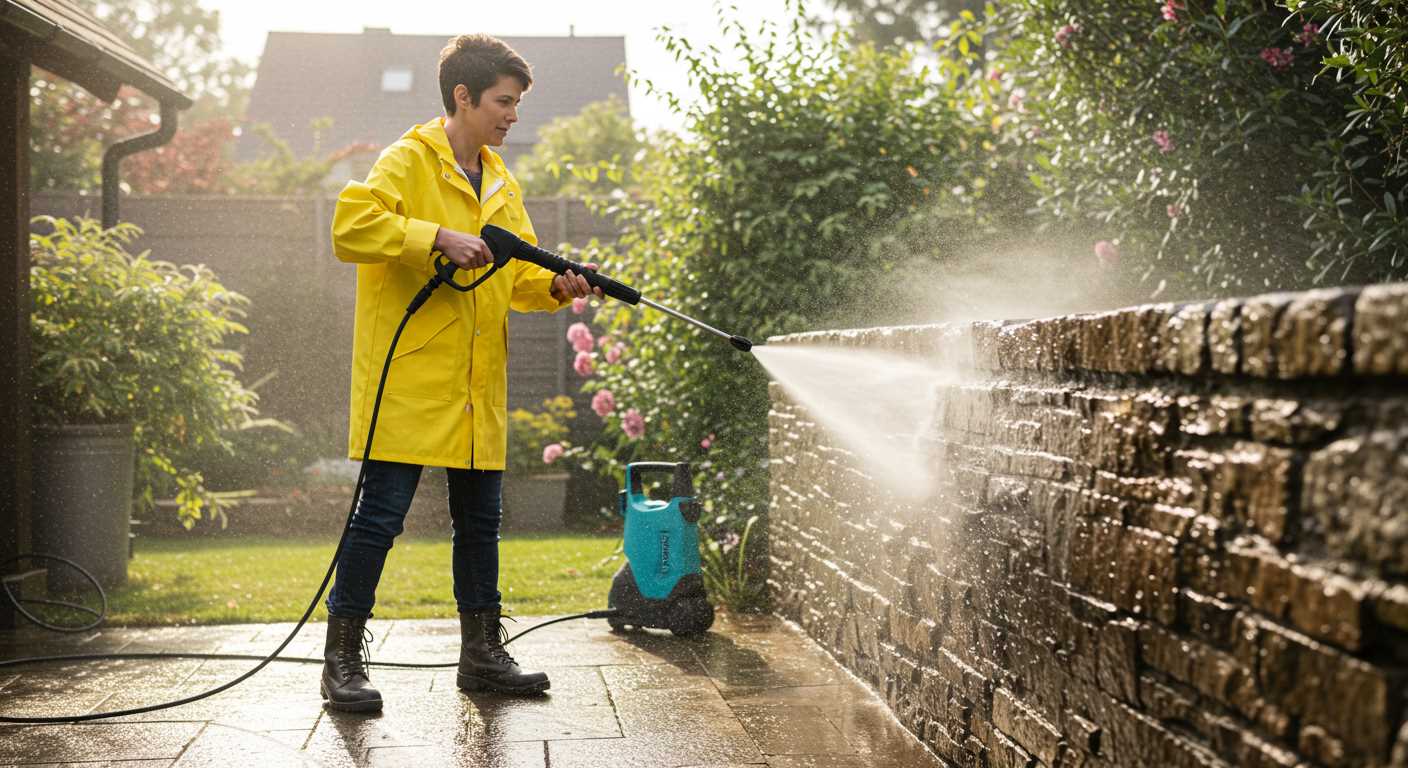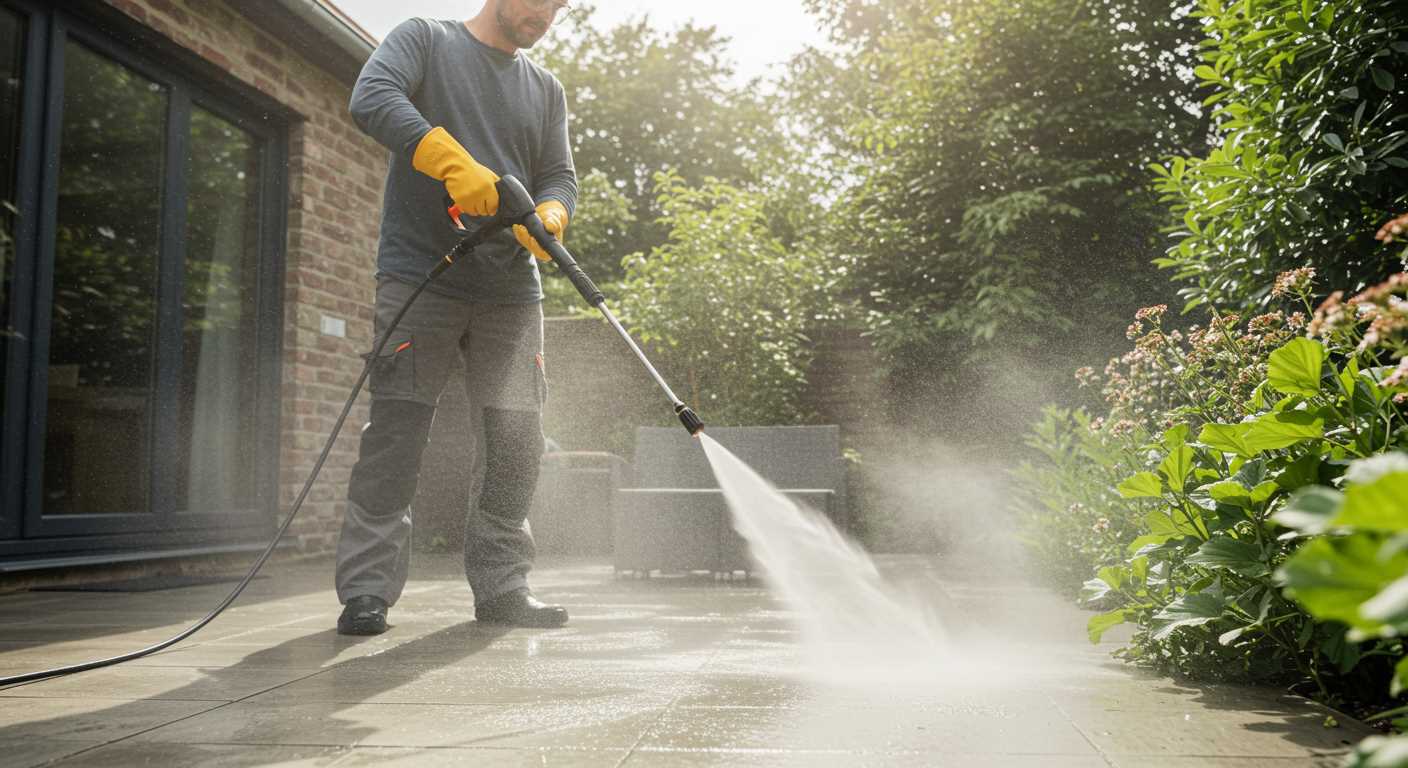



It is essential to focus on water pressure and flow rate as the primary specifications. Look for units that offer at least 1300 to 2000 PSI for light to moderate tasks, ensuring effective surface cleaning without damaging delicate materials. A flow rate of 1.5 to 2.0 GPM complements this pressure, providing sufficient water volume for thorough rinsing.
Consider the motor type as you evaluate options. Electric models are quieter and easier to maintain, while gas-powered variants deliver more power, suitable for larger areas or stubborn grime. If you anticipate frequent usage, gas units might justify their higher costs due to longevity and performance.
Pay attention to the design and accessories included. A unit with adjustable nozzles or rotating tips enhances versatility, allowing for customisation based on the task at hand. Additionally, features like onboard storage for attachments can significantly ease operation and transport.
Choosing the Right Washer for Domestic Cleaning Tasks
Begin with understanding the required cleaning tasks. For outdoor surfaces, consider a unit with at least 1300 to 2000 PSI for effective dirt removal. For delicate tasks like washing cars or patios, opt for PSI around 1300-1600.
Next, evaluate the flow rate, measured in GPM (gallons per minute). A higher GPM indicates faster cleaning. Aim for models with a minimum of 1.5 GPM for general purpose cleaning to ensure efficiency.
Look into the motor type. Electric models are suitable for lighter jobs and are quieter, while gas units offer more power for heavy-duty tasks. Consider your typical usage and storage space when choosing one.
Always check the available nozzles and attachments. A variety of nozzles allows flexibility for different surfaces. Common options include 0°, 15°, 25°, and 40° nozzles, which provide varying spray patterns and pressure levels.
Evaluate build quality and brand reputation. Sturdy construction typically translates to longevity. Research customer reviews and brand warranties to gauge reliability.
A table summarising key specifications can aid comparison:
| Feature | Ideal Range | Purpose |
|---|---|---|
| PSI | 1300 – 2000 | General cleaning |
| GPM | 1.5+ | Efficiency |
| Motor Type | Electric/Gas | Power requirements |
| Attachments | Varies | Versatility |
Lastly, budget considerations play a role. Affordable models may suffice for occasional tasks, while investing in high-quality options is wise for frequent users. Balance your needs with your finances to find the right fit.
Understanding PSI and GPM Ratings
Aiming for optimal cleaning results begins with grasping the significance of PSI (pounds per square inch) and GPM (gallons per minute). PSI indicates the pressure exerted by the stream of water, while GPM signifies the volume flowing through the nozzle.
PSI Explained

A higher PSI denotes greater force, which is crucial for targeting tough grime, oil stains, and other stubborn debris. For lighter tasks such as washing vehicles or siding, a model with 1300-1900 PSI will suffice. However, rigorous applications like cleaning driveways or decks may require equipment exceeding 2000 PSI.
The Role of GPM

GPM reflects the efficiency of water consumption during operation. Increased GPM contributes to quicker cleaning, as it enables faster rinse-off of loosened dirt. For average jobs, a rating of 1.2 to 1.5 GPM serves well, while high-volume projects may benefit from 2.0 GPM or more.
Striking a balance between PSI and GPM is key. A unit with high pressure but low flow may struggle to remove surface dirt efficiently. Conversely, excessive volume with insufficient pressure may not achieve the desired results. Understanding these ratings will guide your selection, ensuring an effective cleaning experience tailored to your specific needs.
Identifying the Right Type of Pressure Washer
.jpg)
Electric models are ideal for light tasks like washing cars, decks, or patios. They are lightweight, quieter, and require minimal maintenance. If you prioritise convenience and ease of use, opt for a unit with a motor rating of 1500 to 2000 watts, which will generate enough power for most residential cleaning jobs.
For tougher tasks such as stripping paint or deep cleaning driveways, consider gas-powered alternatives. These machines typically produce higher pressures and flow rates, making them suitable for heavyweight jobs. Look for engines in the range of 160cc to 200cc for optimal performance. Remember to assess fuel efficiency and maintenance requirements when selecting a gas model.
Another distinction lies in portability. If mobility is a priority, lightweight electric models or compact gas engines are preferable. Heavy-duty gas apparatus can be cumbersome, so weigh the importance of transportability against your cleaning needs.
In terms of versatility, adjustable nozzles or tips allow for various spray patterns, accommodating different surfaces and tasks. A unit equipped with multiple nozzle options enhances its functionality, enabling efficient cleaning from delicate surfaces to tough grime removal.
Lastly, budget is fundamental. Electric variants are generally more affordable, while gas equivalents, though pricier, offer higher performance. Assess the frequency of use and range of tasks to determine a suitable investment. Balancing these factors will lead to a smart selection for your specific cleaning demands.
Evaluating Electric vs. Gas Models

For lighter tasks, electric variants excel with convenience and lower maintenance. Key features include portability, quiet operation, and immediate readiness. Models typically operate between 1,300 to 2,000 PSI, making them ideal for tasks such as washing vehicles, patios, or garden furniture.
Performance and Power
Gas models offer superior power, usually ranging from 2,500 to 4,000 PSI. This increased force suits heavy-duty applications like stripping paint or cleaning large surfaces. When tackling grime on driveways or sidewalks, gas machines perform exceptionally well, handling tougher jobs that electric units might struggle with.
Cost and Maintenance
Electric models generally present a lower initial investment and minimal upkeep. However, gas models, despite their higher cost, deliver a robust lifespan and perform well over time with proper care. If budget constraints are minor, gas units may justify the expense with their versatility and power.
Selecting Appropriate Accessories and Attachments
Investing in specific tools enhances effectiveness and versatility. Pay attention to these key accessories:
- Surface Cleaners: These are ideal for large flat areas such as patios and driveways. They provide an even clean, reducing streaks and save time.
- Variable Nozzles: A list of options ensures you can adjust spray patterns. Choose models that range from wide fan sprays to pinpoint jets for various cleaning tasks.
- Extension Wands: For hard-to-reach spaces, these add length and versatility. Opt for adjustable models to accommodate different heights and angles.
- Foam Cannons: These improve the cleaning process for vehicles or delicate surfaces. Thick foam helps lift dirt and grime before rinsing.
- Pressure Hoses: Consider length and material; a longer hose adds flexibility, while reinforced materials prevent kinks and wear.
- Brush Attachments: Ideal for scrubbing surfaces like garage floors or outdoor furniture. Look for brushes with durable bristles that resist wear.
- Turbo Nozzles: They combine the power of a narrow stream with a rotating action. These are excellent for tougher surfaces needing extra cleaning power.
Match accessories with intended tasks. Assess which attachments enhance productivity and simplify chores around the residence. Better equipment leads to improved results. Ensuring compatibility with your model is critical, as not all attachments fit every cleaner. Check specifications before making a purchase.
Considering Portability and Storage Options
Select a unit weighing less than 30 kg for ease of transportation. Models with wheels and a comfortable handle significantly simplify movement around the property. Look for those with a compact design that allows for easy routing through narrow spaces and around obstacles.
Storage Solutions

Evaluate storage options; units with onboard storage for hoses, nozzles, and cords prevent tangling and loss. Horizontal models often offer a smaller footprint, while vertical designs can conserve space in tight areas. Check for integrated hooks or compartments to keep accessories organised and accessible.
Mobility Features
Features like an adjustable handle can enhance comfort during movement. A retractable handle and collapsible design are beneficial for those with limited storage. Some machines include a lightweight frame or an ergonomic grip, facilitating transport and offering convenience during lengthy tasks.
Budgeting for Initial Purchase and Maintenance
Setting aside a budget for your equipment starts with understanding the initial cost. Prices vary significantly based on brand, model, and specifications. Allocate funds as follows:
- Electric Models: Typically range from £100 to £300. Ideal for light tasks.
- Gas Models: Can cost between £300 and £700, suited for heavy-duty work.
- Accessories: Budget £50 to £150 for nozzles, hoses, and other enhancements.
Maintenance is a crucial aspect easily overlooked during the budgeting process. Factor in annual costs:
- Routine Maintenance: Expect to spend around £50 to £100 annually on oil changes for gas units and occasional parts replacement.
- Cleaning Solutions: Allocate £20 to £50 per year for detergents and chemicals.
- Storage and Protection: Set aside £30 to £70 for covers or storage solutions to prolong longevity.
Consider additional costs for repairs. Having a maintenance fund of £100 to £200 can cover unexpected repairs and extend the lifespan of your equipment. Proper care lowers total costs over time rather than neglecting maintenance, leading to higher expenses and equipment replacements.
Lastly, if unsure of your requirements, consider renting high-end models for specific tasks. This allows you to assess features without committing financially before the final purchase. Aim for a balanced budget that includes not just the upfront costs, but also the ongoing maintenance and accessories that enhance overall functionality.








